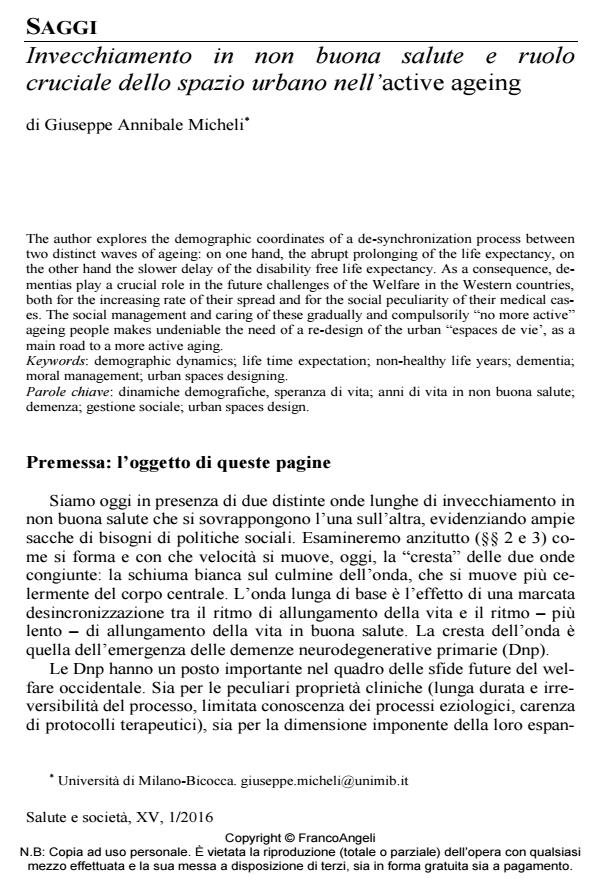Invecchiamento in non buona salute e ruolo cruciale dello spazio urbano nell’active ageing
Titolo Rivista SALUTE E SOCIETÀ
Autori/Curatori Giuseppe Annibale MIcheli
Anno di pubblicazione 2015 Fascicolo 2016/1
Lingua Italiano Numero pagine 18 P. 21-38 Dimensione file 243 KB
DOI 10.3280/SES2016-001003
Il DOI è il codice a barre della proprietà intellettuale: per saperne di più
clicca qui
Qui sotto puoi vedere in anteprima la prima pagina di questo articolo.
Se questo articolo ti interessa, lo puoi acquistare (e scaricare in formato pdf) seguendo le facili indicazioni per acquistare il download credit. Acquista Download Credits per scaricare questo Articolo in formato PDF

FrancoAngeli è membro della Publishers International Linking Association, Inc (PILA)associazione indipendente e non profit per facilitare (attraverso i servizi tecnologici implementati da CrossRef.org) l’accesso degli studiosi ai contenuti digitali nelle pubblicazioni professionali e scientifiche
The author explores the demographic coordinates of a de-synchronization process between two distinct waves of ageing: on one hand, the abrupt prolonging of the life expectancy, on the other hand the slower delay of the disability free life expectancy. As a consequence, dementias play a crucial role in the future challenges of the Welfare in the Western countries, both for the increasing rate of their spread and for the social peculiarity of their medical cases. The social management and caring of these gradually and compulsorily "no more active" ageing people makes undeniable the need of a re-design of the urban "espaces de vie’, as a main road to a more active aging.
Parole chiave:Dinamiche demografiche, speranza di vita; anni di vita in non buona salute; demenza; gestione sociale; urban spaces design.
Giuseppe Annibale MIcheli, Invecchiamento in non buona salute e ruolo cruciale dello spazio urbano nell’active ageing in "SALUTE E SOCIETÀ" 1/2016, pp 21-38, DOI: 10.3280/SES2016-001003